I’m not one to throw money at just any home upgrade, but when it comes to Harvey Windows, I’m sold. These windows aren’t just about letting light in—they’re about transforming your home’s look, feel, and energy efficiency.
After installing them in my own place, I can tell you they deliver on quality, style, and value. Whether you’re upgrading for aesthetics or slashing energy bills, Harvey Windows are a smart choice.
Let me walk you through my experience, the upsides, the not-so-great bits, and how they stack up against the competition—you’ll see why they’re a game-changer.
My Experience With Harvey Windows
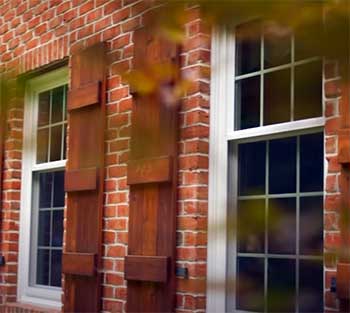
When I decided to replace the old, drafty windows in my 20-year-old colonial home, I was overwhelmed by options.
I’d heard about Harvey Windows from a neighbor who raved about their durability, so I figured I’d give them a shot.
The process started with a local contractor who carried Harvey’s line—Slimline, Classic, Tribute, and the premium Majesty Wood.
I went with the Classic vinyl double-hung windows for most of my house, with a couple of Majesty Wood ones for the living room to add that elegant touch.
The first thing I noticed was how smooth the installation went. My contractor praised Harvey’s design for being installer-friendly, with pre-measured frames that fit like a glove. Within a day, my home had a fresh look—clean lines, sleek hardware, and a modern vibe that didn’t scream “overdone.”
Opening and closing them was a breeze; the sashes tilted in effortlessly for cleaning, which, let’s be honest, is a chore I dread. I was skeptical about the energy efficiency claims, but after the first winter, my heating bill dropped noticeably—about 15% less than the previous year.
The sound dampening was another surprise; living near a busy street, I didn’t realize how much noise my old windows let in until Harvey’s cut it down significantly.
What stood out most was the customization. I could pick colors, grille patterns, and hardware to match my home’s vibe. The Classic line offered enough options to feel personal without overwhelming me.
However, I did run into a hiccup—one window arrived with a minor scratch on the frame. Customer service was responsive, but it took a couple of weeks to get a replacement, which tested my patience.
Overall, living with Harvey Windows has been a noticeable upgrade—my home feels cozier, looks sharper, and I’m confident they’ll last for years.
Pros of Harvey Windows
- Affordability Without Sacrificing Quality

Let’s talk money—you’re not breaking the bank with Harvey Windows.
Compared to premium brands like Andersen or Pella, Harvey’s vinyl options, like the Classic and Slimline, are budget-friendly while still feeling sturdy and reliable.
I paid around $489 per standard double-hung window before installation, which is a steal for the quality.
The frames are thick, with multiple air chambers for insulation, and they don’t feel flimsy like some cheaper brands I’ve seen. You’re getting a solid product that doesn’t scream “bargain bin.”
- Energy Efficiency That Delivers
I was blown away by how much Harvey’s energy-efficient features impacted my bills. Their ThermaLock glazing and Low-E coatings are no joke—they reflect heat back into your home in winter and keep it out in summer.
My Classic windows have double-pane glass with argon gas fills, which makes a noticeable difference in maintaining indoor temperatures. They meet Energy Star standards in Northern and North-Central climates, so if you’re in a chilly region like I am, you’ll feel the difference.
My home stays cozy without cranking the thermostat, and that’s a win in my book.
- Customization Options Galore
One of my favorite things about Harvey is how much you can tweak their windows to fit your style. Whether it’s vinyl or the fancier Majesty Wood line, you’ve got choices—eight exterior colors, two interior finishes, multiple grille patterns, and hardware options.
I went with a colonial grille pattern for my double-hung windows to match my home’s traditional vibe, and it looks fantastic. The Majesty Wood windows in my living room have a rich oak finish that elevates the whole space.
You’re not stuck with cookie-cutter designs here; Harvey lets you make it your own.
- Durability and Low Maintenance
Harvey’s vinyl windows are built to last. The frames are made from PVC with UV stabilizers, so they won’t fade or crack under harsh sunlight. I’ve had mine for two years now, and they still look brand new—no warping, no discoloration.
The Majesty Wood line is treated to resist rot, mildew, and splitting, with aluminum cladding on the exterior to protect against the elements. Cleaning is a breeze; the tilt-in sashes mean I can wipe down both sides without climbing a ladder.
For someone like me who hates upkeep, this is a huge plus.
- Sound Dampening for Peaceful Living
If you live near a busy road or have noisy neighbors, Harvey’s windows are a lifesaver. The multi-pane glass and tight weatherstripping cut down on outside noise way better than my old windows.
I used to hear every car horn and dog bark, but now my home feels like a quiet sanctuary. It’s not just about comfort—it’s about sanity. Harvey’s design ensures a tight seal, so you’re not just blocking drafts but also muffling the chaos outside.
Not-So-Good Parts of Harvey Windows
- Limited Warranty on Wood Windows
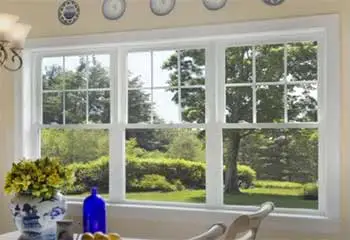
One thing that bugged me was Harvey’s warranty, especially for their Majesty Wood line.
You get a 10-year warranty on wood windows, which is decent but pales compared to competitors like Andersen, who offer 20 years on glass and 10 on other parts, often transferable.
If you’re investing in wood for that premium look, you’d expect a longer safety net.
My vinyl windows have a lifetime warranty on parts and glass, which is great, but the wood warranty feels like a weak spot for such a high-end option.
- No In-House Installation
Harvey doesn’t handle installation themselves, which can be a hassle. You’re relying on third-party contractors, and the experience depends on who you hire. My contractor was fantastic, but I’ve heard horror stories from others about sloppy installs or delays.
It’s not Harvey’s fault directly, but it means you’ve got to do extra homework to find a reliable installer. If you’re looking for a seamless, all-in-one experience, brands like Renewal by Andersen might be more your speed since they manage everything.
- Regional Availability Only
Harvey’s reach is limited to 16 states, mostly on the East Coast. If you’re outside Connecticut, Delaware, or places like Massachusetts and New York, you’re out of luck. I’m lucky to live in their service area, but it’s frustrating to think such a solid product isn’t available nationwide.
Big names like Pella and Andersen are more accessible, which could be a dealbreaker if you’re in, say, California or Texas. It’s a bummer because Harvey’s quality deserves a wider audience.
- Mixed Customer Service Experiences
While my scratch issue was resolved, it wasn’t as quick as I’d hoped. Digging into reviews, I found others echoing this—some folks rave about Harvey’s customer service, while others complain about slow responses or unhelpful reps.
One person even mentioned a rude interaction with a rep over defective screens. It’s hit-or-miss, and when you’re spending thousands on windows, you want consistent support. Harvey could tighten this up to match their product quality.
Maintenance Tips For Harvey Windows
- Regular Cleaning for Longevity
Keeping your Harvey Windows sparkling is easier than you’d think, but it takes a little routine. I clean mine twice a year—spring and fall. Use a mild dish soap mixed with water and a soft cloth to wipe down the vinyl frames.
Avoid abrasive cleaners; they can scratch the surface. For the glass, a vinegar-water solution works wonders for streak-free shine. The tilt-in sashes are a godsend—just tilt them in and clean both sides from inside.
For wood windows, dust the frames monthly to prevent buildup, and check for any signs of moisture damage.
- Inspecting Weatherstripping and Seals
Harvey’s weatherstripping is top-notch, but it’s not invincible. Every six months, I check the seals around the sashes for wear or cracks. If they’re starting to look worn, a quick call to your contractor can get replacements.
Keeping these tight ensures that energy efficiency and sound dampening stay intact. I also run my hand along the edges during windy days to feel for drafts—if you notice any, it’s time to inspect.
A little silicone spray on the tracks keeps the sashes sliding smoothly without sticking.
- Protecting Wood Windows
If you’ve got Majesty Wood windows like I do, they need extra love. The aluminum cladding protects the exterior, but the interior wood needs occasional care. Every year, I check for scratches or chips in the finish.
A light sanding and a coat of wood sealant can prevent bigger issues like rot. Avoid harsh chemicals near the wood; they can strip the protective treatment. If you live in a humid area, consider a dehumidifier indoors to keep moisture from creeping into the frames.
- Checking Hardware and Screens
The hardware on Harvey Windows is sturdy, but it’s worth a quick check now and then. I tighten any loose screws on the locks or handles every year to keep everything secure. For screens, especially the VIEWS half-screens, clean them with a soft brush to remove dust and bugs.
If you notice tears or poor fit, replace them—my contractor warned me that Harvey’s screens aren’t the best at keeping out tiny pests, so full screens might be worth the upgrade if bugs are an issue.
- Energy Efficiency Tune-Ups
To keep those energy savings rolling, make sure your windows are performing at their best. Once a year, I check the Low-E coatings by looking for any discoloration or haze, which could mean a seal failure. If you spot this, contact Harvey for a warranty claim.
Also, keep curtains or blinds slightly open during the day to let the Low-E glass do its job reflecting heat. If you’re in a cold climate, consider adding storm windows for extra insulation during winter—Harvey offers compatible options.
Comparison of Harvey Windows With Other Brands
Let’s see how Harvey Windows stack up against American Craftsman, Sierra Pacific, and SoftLite. I’ve dug into what each brand brings to the table, and I’ll break it down so you can decide what’s best for your home.
- Harvey Windows Vs. American Craftsman: Price and Accessibility
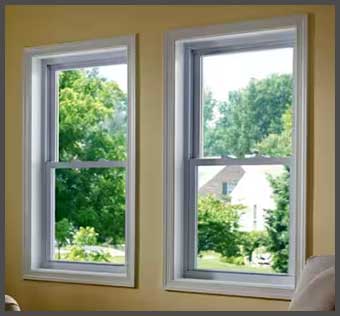
American Craftsman, often sold through big-box stores like Home Depot, is all about affordability and availability.
Their vinyl double-hung windows start as low as $300, undercutting Harvey’s $489 price tag.
You can walk into a store and get them without dealing with contractors, which is great if you’re a DIYer.
But here’s the catch: American Craftsman’s quality feels basic.
Their frames are thinner, and the energy efficiency—while decent—doesn’t match Harvey’s ThermaLock glazing or argon-filled panes.
I noticed Harvey’s windows cut my energy bills more noticeably than a friend’s American Craftsman ones did. Plus, Harvey’s customization options, like grille patterns and hardware, run circles around American Craftsman’s limited choices.
If you’re on a tight budget and need windows fast, American Craftsman is tempting, but Harvey’s durability and efficiency make it worth the extra cost for me.
- Harvey Windows Vs. Sierra Pacific: Material and Aesthetics
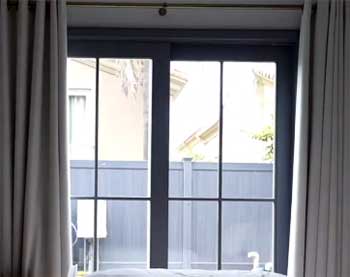
Sierra Pacific leans hard into premium materials, especially wood and aluminum-clad windows, which appeal to those chasing a high-end look.
Their H3 line, with wood interiors and aluminum exteriors, is gorgeous but pricey—think $800-$1,200 per window, nearly double Harvey’s Majesty Wood line.
Sierra Pacific’s wood finishes are more varied, offering exotic options like mahogany, while Harvey sticks to oak or pine.
However, Harvey’s vinyl Classic line is far more affordable and requires less upkeep than Sierra Pacific’s wood-heavy focus, which needs regular sealing to prevent rot.
Sierra Pacific’s energy efficiency is solid, but Harvey’s Low-E coatings and multi-chambered frames perform just as well in my cold climate. If you’re after luxury and don’t mind maintenance, Sierra Pacific shines; for a practical yet stylish option, Harvey’s my pick.
- Harvey Windows Vs. SoftLite: Energy Efficiency and Warranty
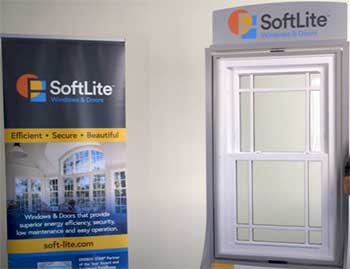
SoftLite is a strong contender in the vinyl window space, known for its energy-efficient designs like the Elements and Imperial Pro lines.
Their triple-pane windows with krypton gas can outperform Harvey’s double-pane argon-filled ones in extreme climates, potentially saving you more on bills.
SoftLite’s lifetime warranties, including glass and parts, are transferable, which edges out Harvey’s 10-year wood warranty.
Price-wise, SoftLite is closer to Harvey, around $450-$600 per window, but their custom options are less extensive—fewer grille patterns and color choices.
I love Harvey’s tilt-in sashes for easy cleaning, a feature SoftLite matches, but SoftLite’s frames feel slightly less robust. If energy efficiency and warranty are your top priorities, SoftLite might pull ahead; for customization and value, Harvey’s still my go-to.
Frequently Asked Questions (FAQ)
Absolutely, Harvey Windows are high quality. Their vinyl windows, like the Classic and Tribute lines, are built with thick, multi-chambered frames for excellent insulation and durability. The Majesty Wood line uses treated ponderosa pine with aluminum cladding to resist rot and weathering. They meet Energy Star standards, offer great sound dampening, and have an A+ BBB rating with mostly positive customer reviews. While not as flashy as some luxury brands, they’re a reliable choice for most homes.
The average cost for a standard Harvey double-hung window is around $489 before installation, based on my experience and contractor quotes. Prices vary by line—Slimline is cheaper, around $400, while Tribute or Majesty Wood can hit $600-$800 per window. Custom shapes or larger styles like bay windows push costs higher. Installation adds another $100-$300 per window, depending on your contractor and region. It’s a solid value compared to pricier brands like Andersen.
Harvey Windows hold their own against Andersen, but it depends on your priorities. Harvey’s vinyl windows are more affordable, starting at $489 versus Andersen’s $800-$1,200 for similar styles. Both offer great energy efficiency and durability, but Andersen’s Fibrex material and 20-year glass warranty outshine Harvey’s 10-year wood warranty. Harvey’s customization is solid, but Andersen offers more material options and nationwide availability. For budget-conscious folks like me, Harvey’s quality-to-price ratio is tough to beat, but Andersen might edge out for premium features.
Harvey Windows are manufactured by Harvey Building Products, a company founded in 1961 and based in Waltham, Massachusetts. They specialize in vinyl and wood windows, serving 16 East Coast states. Known for quality craftsmanship, they produce lines like Slimline, Classic, Tribute, and Majesty Wood, focusing on energy efficiency and durability. They don’t sell directly to consumers, so you’ll need to go through a distributor or contractor to purchase.
Wrapping Up
After living with Harvey Windows, I can confidently say they’re a fantastic investment. They’ve transformed my home’s comfort, cut my energy bills, and added a sleek, custom look that’s hard to beat for the price.
From their durable vinyl to the elegant Majesty Wood line, Harvey delivers quality you can feel. If you’re in their service area and want windows that balance affordability, style, and performance, don’t hesitate.
Trust me, you’ll love the difference they make in your home.
